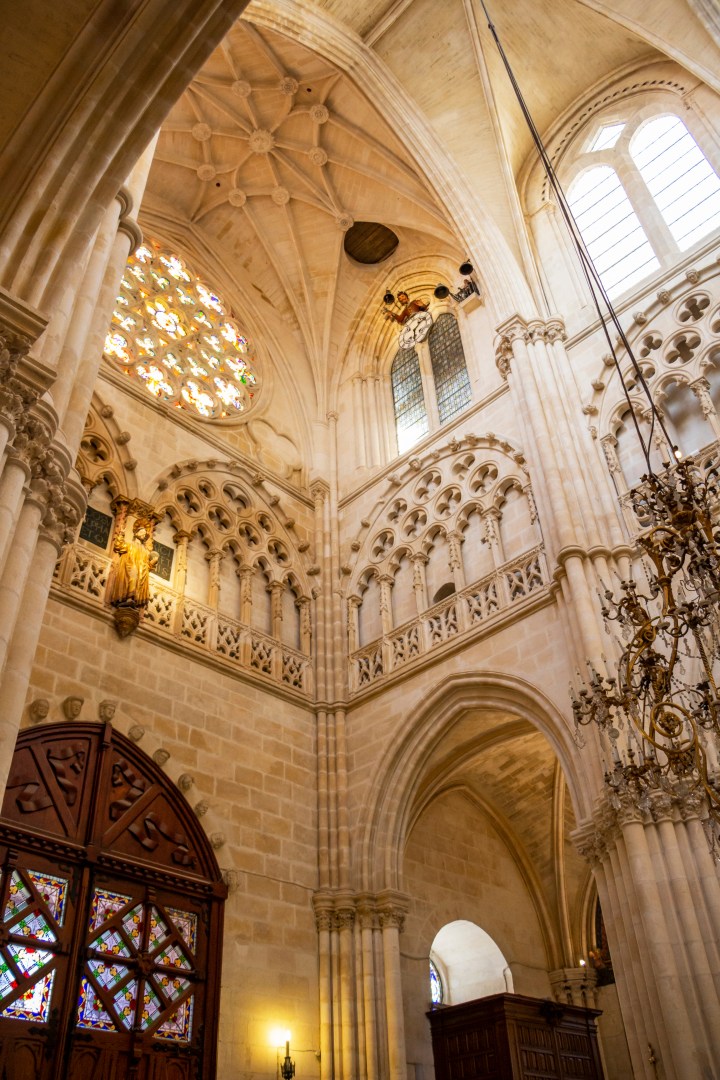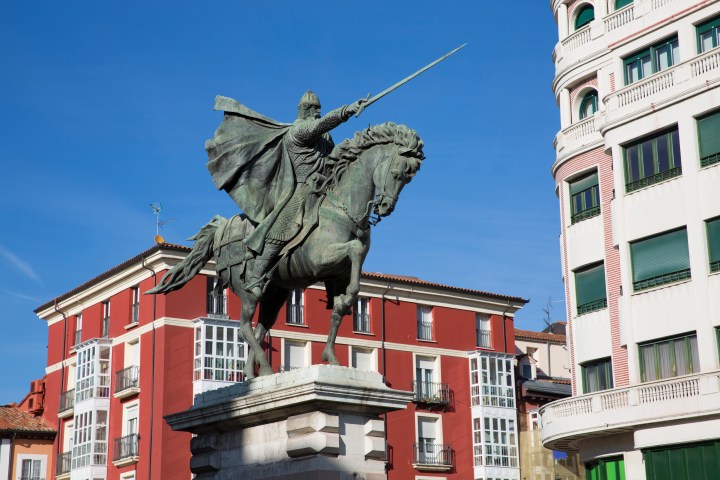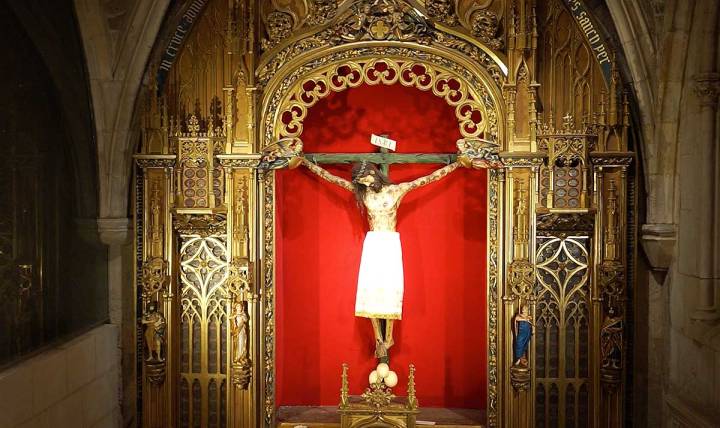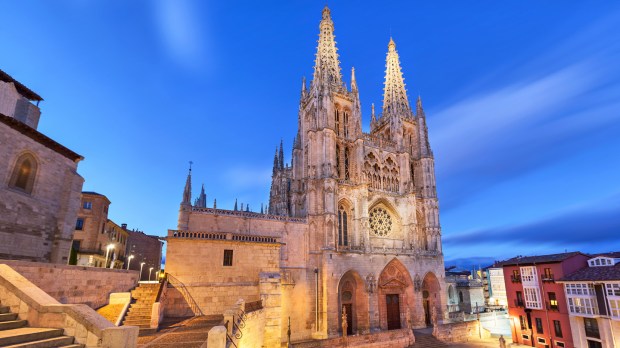The cathedral of St. Mary of Burgos is one of the finest examples of Gothic buildings in the world, and the first one in the whole Iberian Peninsula. Even though Burgos became a bishopric as early as in 1075, during the reign of Alfonso VI of León and Castile (Alfonso “the Brave”), it was not until 1221, under Ferdinand III (Ferdinand “The Saint”) when the construction of the cathedral began. The year 2021 marks the 800th anniversary of this beginning,and a jubilee year of the Diocese of Burgos concludes tomorrow.
The cathedral originally built by King Alfonso was finished in 1096. But this first church, also dedicated to Virgin Mary, soon became too small for Burgos, a city meant to become the symbolic capital of the kingdom of Castile and León, uniquely powerful politically, economically, and spiritually — as it is one of the main stops along the French Way of the Camino de Santiago. Alfonso’s Romanesque cathedral was eventually demolished (as was then customary) to make room for the new one. The then-pope, Honorius III, granted a general indulgence to all those contributing to the construction of the new Burgalese church.

Its façade competes in beauty with those of the great cathedrals of Paris and Reims, and its elevated interior is often compared (and confused, because of the phonetical similarities) with that of the French Cathedral of St. Stephen in Bourges. But St. Mary is surely unique in many aspects. To begin with, it is one of the very few medieval structures that has elegantly and seamlessly integrated elements from later (and even prior) artistic styles. Built throughout the centuries from the original Romanesque design of Alfonso’s previous church (some of its now 1,000-year-old elements are preserved in the current building), it went through successive renovations and embellishments, until it finally reached its current splendor in the late 18th century. The building can be said to be a standing historical treatise on Gothic, mudéjar, Renaissance, Baroque, neoclassic, and neo-Gothic art.
Burgos, crossroad of legends
This is also the place where two typically Iberian characters meet: Santiago the Apostle and Rodrigo Díaz De Vivar, El Cid Campeador. In fact, the city of Burgos is itself at the crossroads of two legendary Spanish routes: the Camino de Santiago (surely the most famous of all pilgrimage routes in the world) and the Camino del Cid, a cultural route that explores the literary and historical landmarks associated to the medieval Spanish knight, from small rural villages to the great city of Burgos. In fact, the Camino del Cid can be said to either begin in Burgos, where he was born, or end there — the tomb of El Cid and that of his wife, Doña Ximena, are two of the most important treasures kept in the cathedral.

El Cid is the quintessential heroic Iberian character. Being alternatively at the service of both Christian and Muslim regents, the stories of his deeds are collected in the Cantar Del Mio Cid (literally, “The Song of my Cid”), the oldest preserved Castilian epic poem, which offers a unique glimpse into the complex religious and political landscape of 11th century Spain. At first, he was buried at the monastery of San Pedro de Cardeña, in the vicinity of Burgos (where his horse, Babieca, is still buried) but his remains were transferred to the cathedral a century ago, in 1921, to commemorate its 700th anniversary.
The Jubilee Year
The Jubilee Year of the diocese of Burgos was inaugurated on November 7, 2020 with the opening of the Puerta Santa del Perdón, the Holy Gate of Forgiveness also known as the Royal Door, one of the many profusely adorned, Gothic-to-Baroque porticoes of the cathedral.
The Archbishop of the See, Fidel Herráez, explained that Pope Francis granted the diocese the permission to celebrate this special Jubilee Year on the occasion of the eighth centenary of the cathedral. The celebration was supposed to begin on June 20, 2020, and end on June 20, 2021, marking the day the first stone of the cathedral was laid in 1221. However, because of the pandemic, the opening of the jubilee was delayed until November 2020, and it will conclude tomorrow.
The bishop also explained, as reported in El Correo de Burgos, that this Jubilee had clear spiritual, social, ecclesial, and cultural goals. Under the motto “you are the temple of God,” the diocese prepared a special itinerary —the “Jubilee Path,” with more than a hundred volunteers trained to assist visitors along the route leading to the cathedral. Pilgrims walking the route discovered its many artistic and historical treasures, but also had an authentic, personal experience of spiritual renewal.
The “Cristo de Burgos”
While the cathedral abounds in artistic and cultural treasures (Flemish triptychs, remarkable paintings from the 15th, 16th, and 17th centuries, fine goldsmith works, textiles and invaluable documents), one sculpture stands out above all others: the famous Christ of Burgos.

Its impressive, lifelike realism is the stuff of legend. At some point, it was claimed its hair and fingernails needed frequent trimming and paring, and that the facial hair of the wooden statue also required a shave every eight days or so. In fact, the wooden body of the Christ is covered in skin-like leather to accentuate its realism.
Legend has it that a rich wool merchant from Burgos had promised the friars of the convent of St. Augustine he would bring them a gift upon his return from a commercial trip to Flanders. As he was already making his way back to Spain, he realized he had forgotten his promise. The moment he remembered, he found a wooden box floating in the sea, containing the sacred image. A seagull had nested at the base of the cross and laid its eggs there. Since then, the eggs became the symbol of the Cristo de Burgos.
In his classic Bestiary of Christ, Louis Charbonneau-Lassay explains eggs and seeds “contain a promise: that of a new life which will soon emerge.” The egg is, in Christian art, a symbol of hope. In in his Sermon CV, 8, St. Augustine wrote:
“There remains hope, which in my opinion can be compared to the egg. For hope has not yet reached its goal; likewise the egg is something, but it is not yet the chicken.”
It makes sense that this Crucified Christ, which belonged to an Augustinian convent, included these eggs at the base of the cross, following this reflection from St. Augustine himself. These eggs express the highest of all hopes: that of the Resurrection of Christ after the sheer abandonment of Holy Friday, and that of the believer’s rebirth into a blessed life beyond death.

